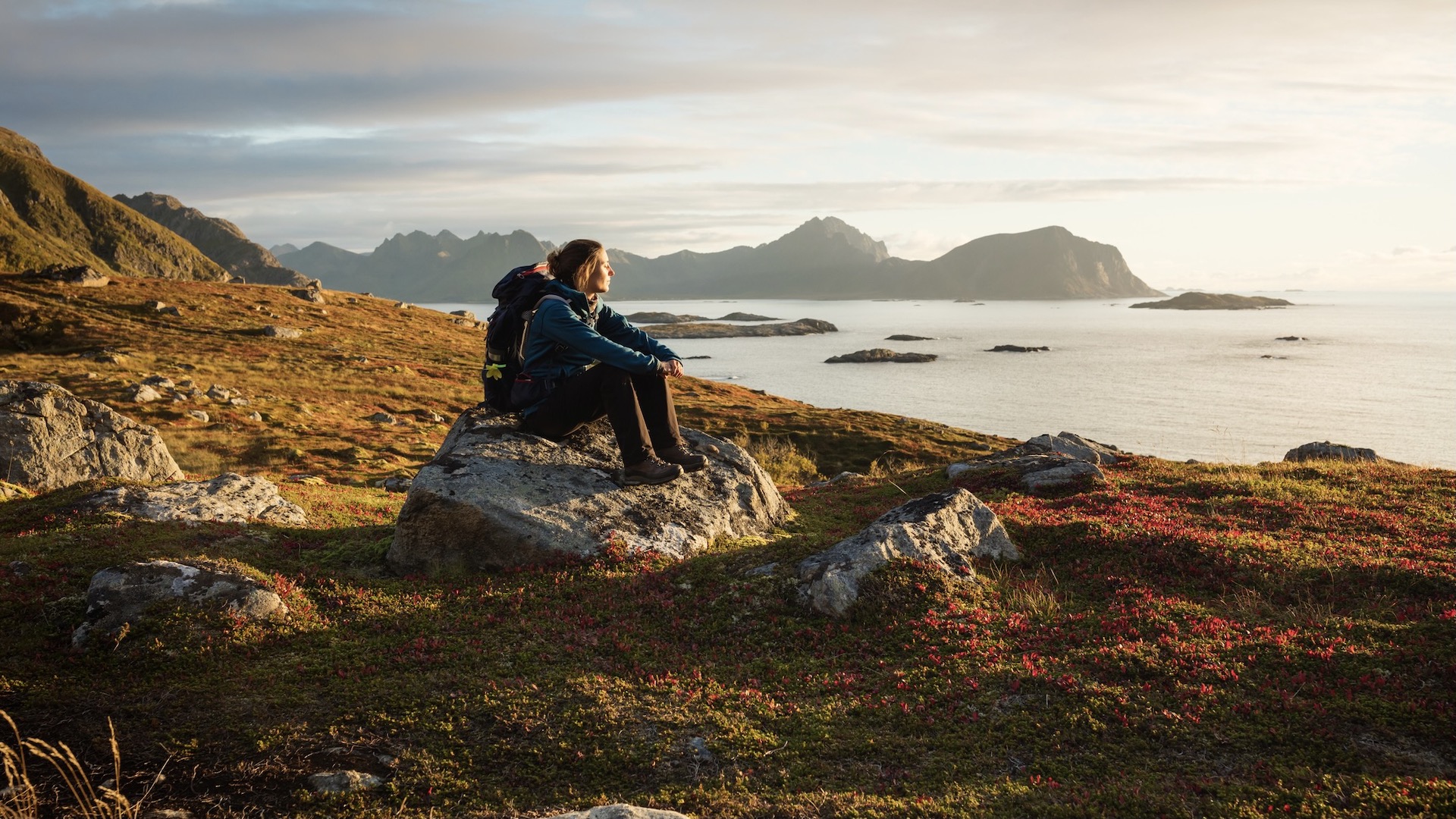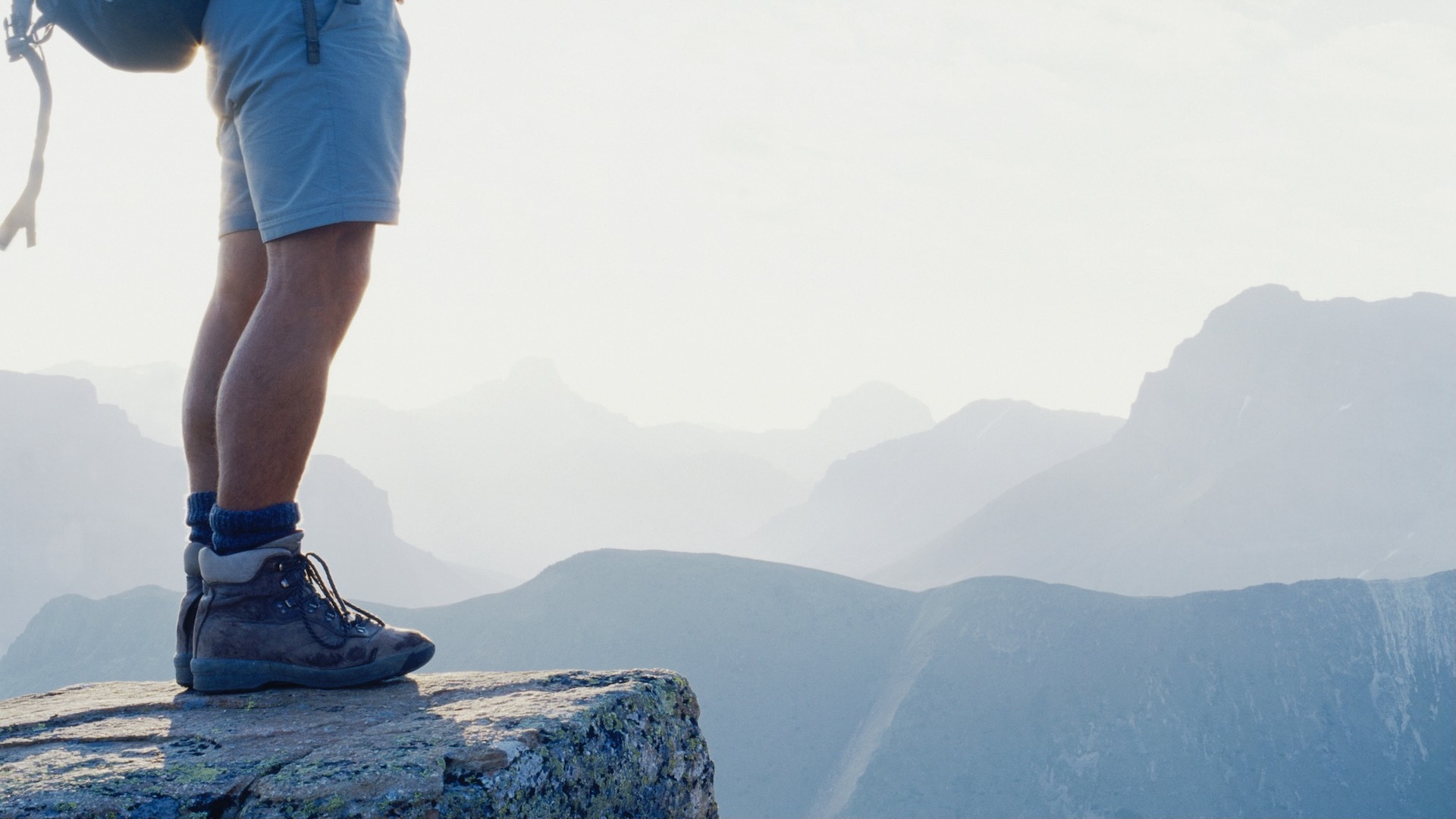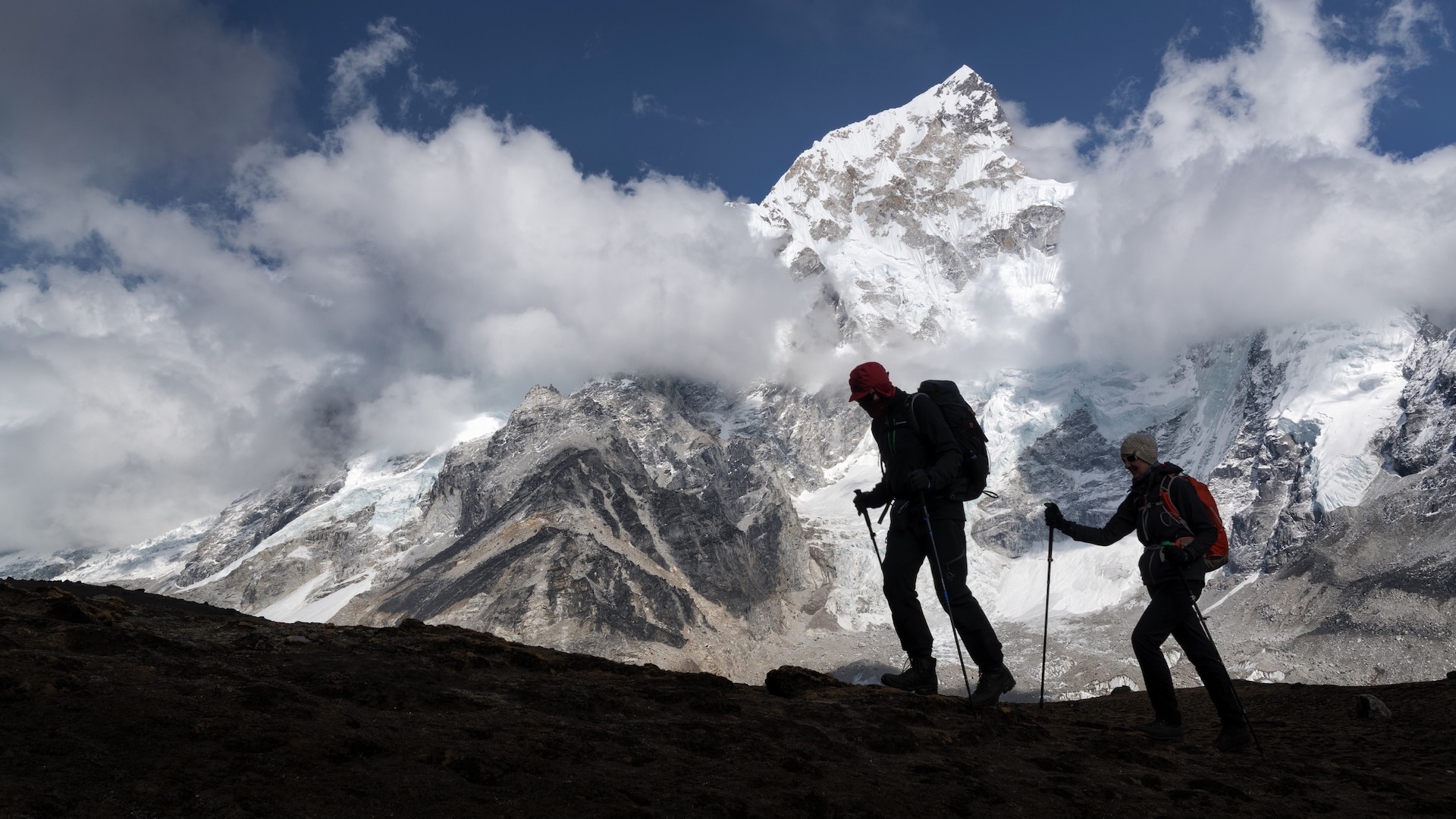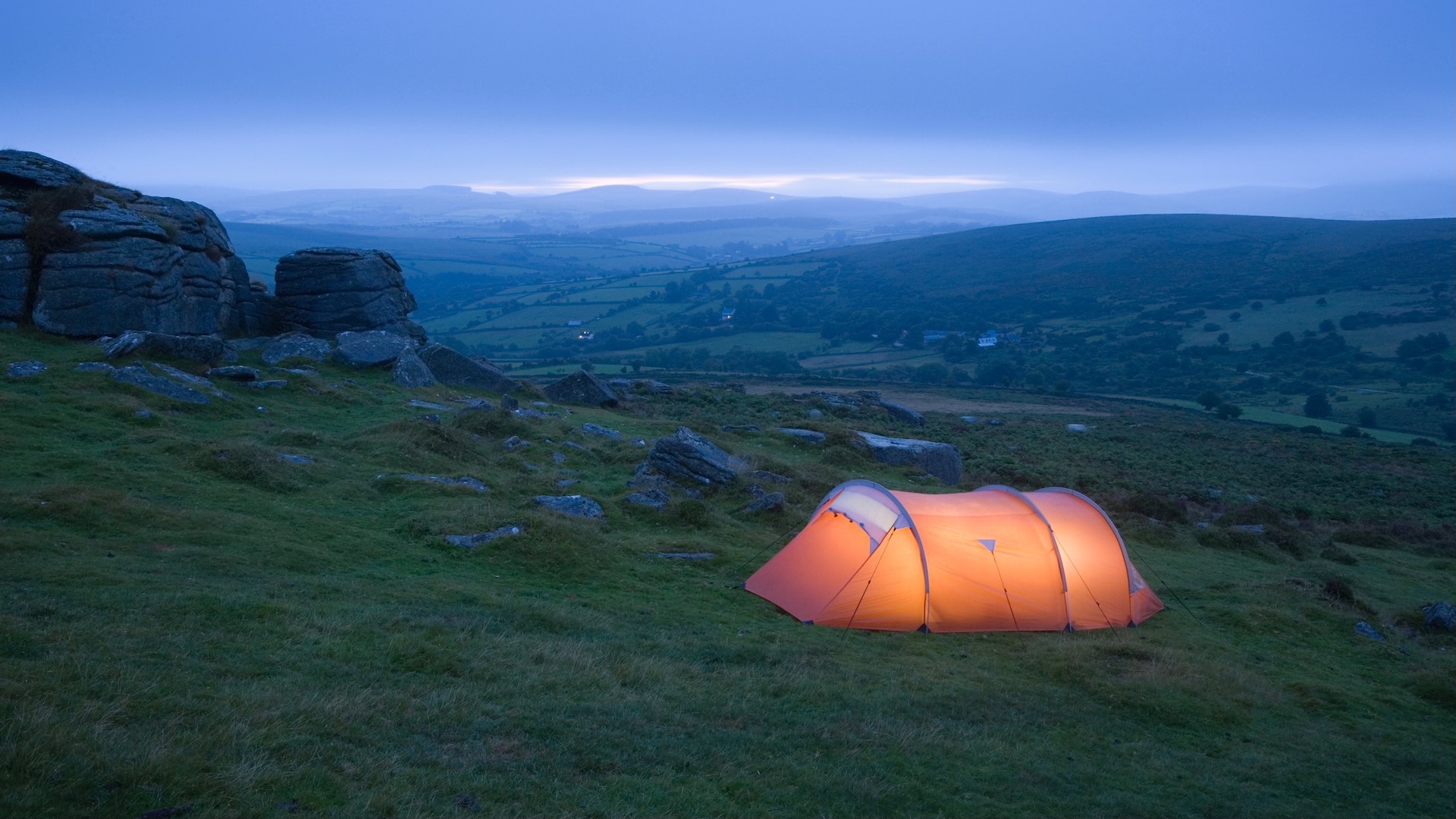
When buying new outdoors kit, including clothing such as waterproof jackets and footwear, as well as camping equipment like tents and sleeping bags, you’ll likely come across the term “three-season”, as well as “four-season” and “two-season”. This is a subject that faces increasing debate, so let’s take a look at what three-season means in the traditional sense – and what it means in more recent times.

What is three-season outdoor kit?
There is often a debate among outdoors fans – and even in outdoor stores themselves – about three-season equipment, clothing and footwear. Strictly speaking, "three-season" covers the seasons of spring, summer and autumn, but not winter.
That means, the products are best suited to the milder weather conditions of spring, summer and autumn, although, increasingly, we are being faced with more extreme weather in all of the seasons and, sometimes, less extreme weather in winter.
In some ways, three-seasons is a very general term to use because of the changeable and fluctuating conditions across all the seasons.
In addition, as the definition of the weather has become more blurred in all seasons, so the grades from two to four season have become more blurred among manufacturers. This is partly due to modern materials that lend themselves to more durable and waterproof designs.
This means, for example, that some three-season hiking boots and waterproof jackets will be suitable for walking in some milder winter conditions and below the snow line. The difference between three-season and four-season is the requirement for products that can keep walkers and campers warm, dry and, therefore, safe.
Four-season products will usually be made of materials that are warmer, thicker, more waterproof, durable and simply more capable of keeping people warm and dry in winter conditions of snow and storms.
What to expect from three-season outdoor kit
We take a look at different kit to reveal what three-season means and when you might choose to buy, rather than choosing two or four season.

Three-season hiking footwear
Let’s start with hiking footwear. Three-season can refer to shoes and boots and the design usually includes a fabric upper or a mix of fabric and leather. The footwear is likely to be more lightweight than a four-season boot.
Most three-season boots have some kind of waterproof membrane, often made of Gore-Tex, and what is oft seen as a defining difference between tow-season and three-season is whether the boots are waterproof or not.
Note that fabric with a Gore-tex liner will lose its waterproofing long before leather.
Other features of three-season footwear include a flexible, or bendy, sole rather than a dedicated winter boot or a four-season boot with a much stiffer sole. The flexibility of the boot makes it easier to walk on all kinds of terrain.
Three-season boots are usually lighter in weight and this means that walkers will feel more nimble when hiking.
A lighter and more flexible boot, with fabric uppers, will also be less likely to cause sweat issues in warm weather.
Three-season footwear usually features less aggressive lugs compared to a winter boot. This means that three-season footwear is more suited to country trails and hill and mountain paths, with limitations such as underfoot traction when the route is particularly steep, rocky, muddy or very wet.
Some brands promise good traction in the three seasons even when it’s wet and muddy, but the chances are they will not be as grippy as four-season boots that are generally designed with deeper lugs and a sharper edge heel for digging into the rough and loose terrain.
Another difference between three-season and four-season boots is crampon compatibility. It is usually suggested that only four-season boots with a stiffness rating of B1-3 can accept the equivalent crampon of C1 (front and rear cage) C2 (front cage, rear clip) and C3 (front and rear clip).
Three-season boots usually a more flexible sole and, therefore, are not normally suitable for these types of crampons. However, there are some exceptions. Sometimes three-season boots feel like a B1 boot because they have some sole stiffness and a leather upper as well as a rear welt to clip in a C2 crampon.
Also, you can match three-season boots with microspikes and walkers’ crampons, which are useful in mild winter conditions when it is icy or there is some snow cover but not deep snow.
The major problem with three-season footwear in full-on winter conditions is that feet get cold because the uppers are thin and less robust, therefore making them less heat insulating.
Other three-season features include a mid-height or lower cut ankle cuff and more likelihood that eyelets for laces will be made of fabric or lower-grade metal. You may see only one pair of metal hooks higher up the boot. All this says that three-season boots are for walking in generally drier and more clement conditions.
Of course, there will be locations, as well as weather conditions, that will require more robust and stable footwear. For example, if you are hiking more extreme mountain terrain, where it is likely to be very rocky, or at higher altitude where it will be cold, or if you are in a place where there will be a lot of rain and mud, even in spring, summer and autumn, then you will need boots that have greater grip, waterproofing, protection and warmth. In this case a four-season boot, even in the other three seasons, could make more sense.

Three-season waterproof jackets
Another category of outdoor clothing that is often described as two-season, three-season or four-season, is a waterproof jacket. Again, the lines of definitions are blurred because it depends on where you are going to be hiking.
Spring, summer and autumn have generally milder conditions compared to winter, but the milder seasons can also be wet and windy. If you are hiking at higher altitudes in any season, it’s worth looking at a four-season, or winter, waterproof jacket.
Some of the features to expect in a three-season waterproof jacket include a reputable waterproof membrane. This might be different from a two-seasons jacket that is more likely to provide water-resistance and a Durable Waterproof Repellency (DWR) treatment.
Three-season jackets will have a more robust waterproof membrane as standard. This could be Gore-Tex or the brand’s own membrane. It might be used in a lighter weight jacket, such as Gore-tex Paclite, or as part of a two-layer system, rather than a three-layer system as used in products such as Gore-Tex Pro. What this means is that two layers comprise the waterproof and breathable membrane, as well as an outer layer of fabric. This outer layer is likely to be treated with DWR, too.
In a three-layer jacket you’ll see a waterproof and breathable membrane sandwiched between an outer fabric layer and an inner layer. The three layers will generally be stiffer, heavier and more robust and durable. This is what is much more likely to be used in a four-seasons or winter waterproof jacket.
With a three-season jacket you want waterproofing and breathability but perhaps not to the same high degree as in a four-seasonsjacket because in spring, summer and autumn you do not expect to be hiking in the harsher conditions of winter.
Other features of a three-season waterproof jacket will include a good quality hood, hopefully with the means to fully adjust to fit, and some kind of rain peak. Zips might be one way or two-way but hopefully waterproof or water resistant, too.
Pockets will vary. Some lightweight and pared down three-season waterproof jackets will have fewer or zero pockets, while others might have zipped hand pockets and an internal security pocket.
Other features to look for include adjustable cuffs and hem.
When comparing a three-season waterproof jacket to a four-season waterproof jacket, other details you might notice will be reinforced areas of the jacket. A winter waterproof will need to cope with hikers carrying heavier packs so you might see reinforced fabric at the shoulders, for example, as well as around the hip area.
The fabric of a four-season waterproof jacket will be heavier and more wind and cold resistant, compared to a three-season waterproof jacket.

Three-season tents and sleeping bags
As with the hiking footwear and waterproof jackets, the main difference between three-season tents and four-season tents is the fabric. It’s perfectly possible to use a four-season tent in spring, summer or autumn, but the chances are you’ll will need to carry a heavier tent.
The fabric of a three-season tent is likely to be thinner and capable of keeping out the wind and rain but not to the same extent as a four-season tent. You will also see different features such as lighter weight pegs, guy lines and base liners.
With sleeping bags, there is always a balance of warmth to weight. A three-season bag is likely to be lighter to carry but tat’s because the temperature range of warmth offered will be less than in a four-season sleeping bag. There are other features to look for, such as a warming baffle at the neck and hood in a winter sleeping bag, plus extra warming insulation at the foot area.
If you know you get cold whatever the season, a four-season bag could be your best bet although, on average, they will take up more space in your rucksack and be heavier to carry.
Again, this a generalisation because some brands have designed sleeping bags – and tents – that are capable of keeping you warm and dry in extreme conditions yet they are as lightweight and compact as a three-season product.
The biggest difference you will see in the camping category is with two-season items. They are meant for fine weather and you shouldn’t generally expect them to cope in rain or wind, even in the summer months.
Conclusion: what does three-season mean?
As we have said, there are some generalisations when comparing three-season outdoors products with two-season and four-season. We have chosen to compare some of the features across hiking footwear, waterproof jackets, tents and sleeping bags. There are plenty of other products that are rated according to the seasons but we consider these are the most common.
The grades of seasons have become blurred by different brands because it’s possible to make products to suit a range of weather conditions and one spring or summer day won’t be the same as another.
The best advice is to check the weather first, consider how long you will be outdoors and at what altitude. Then pick the outdoors products that will do the best job at keeping you warm and dry.
Choosing a heavier, more water and windproof product, as well as one with greater insulation, is a good idea if the weather will be inclement even in the “three milder seasons”. Also, you might be able to use a three-season product in the winter, if conditions allow.







